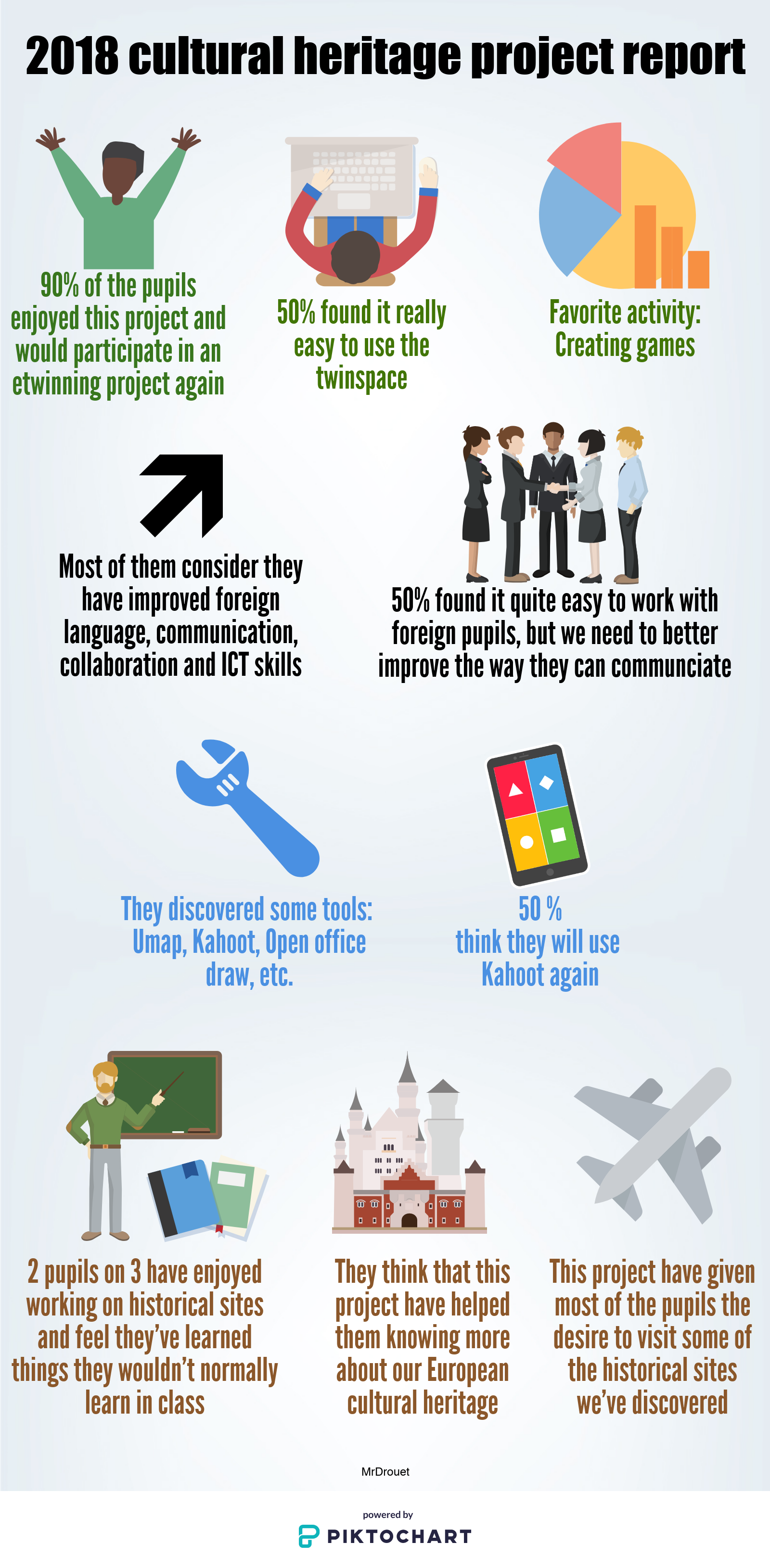Summary results/impact student evaluation:
A vast majority of the students enjoyed taking part in this project. What they liked most was creating presentations about each other’s cultural heritage sites. They learned a lot about other countries cultural treasures. What they didn’t like so much was looking up all the information because that was time-consuming. Most of them improved their English language skills and they also learned a few ICT things (such as using an interactive map, producing games using websites or QR code generators and working together. The students had to communicate with each other (via email, notepad, Google Drive, Forum, chat…) and they needed each other in order to produce their cultural heritage site presentations. Working with international students was something what not all students found so easy. There were times when it was difficult to contact their buddies (something we solved by asking our students to involve their teacher) and sometimes because of language barriers. As teachers we sometimes had to help a hand in looking for the correct translation. Still the students learned quite a lot (see above: working together). Our students wrote that this project helped them in knowing more about the cultural heritage sites of other European countries and the majority answered that they would definitely like to visit those sites if they ever had a chance. More than 27% even involved their parents and shared their knowledge with them. Almost 80% answered that they learned things they wouldn’t normally learn during regular class and the majority would like to participate in future eTwinning projects.

Summary results/impact teacher evaluation:
As for the teachers they also enjoyed working on this project and the communication was well-organised, mainly because of the RIOT chat-app we used. Colleagues were interested in what we did and so were school Heads, but our advice for Europe/NSS/CSS is to organise the Europe day outside the May holiday. It’s very difficult to celebrate eTwinning/internationalisation/education project which involve Europe if this day of celebration takes place in the middle of our holidays. As teachers we also learned a thing of two about other countries and their cultural heritage sites and we think that we could make this project even more effective if we were to organise a KA2 project so we could actually visit each other and each other’s cultural heritage sites. That will/might definitely increase the impact in our schools and beyond. Other tips were sharing more of our work with other schools. This might actually happen as our project is short-listed to be part of the next eTwinning book. This way other schools might also learn more about how you can start up a project about cultural heritage. As for ICT we also learned a few new things. The online interactive map was a highlight, but also how our students from our countries used different kinds of games to test each other’s cultural heritage knowledge. Last but not least we enjoyed working together and we are looking forward to working again on an eTwinning project in the future.
Below is a piktochart of the teachers' evaluation: